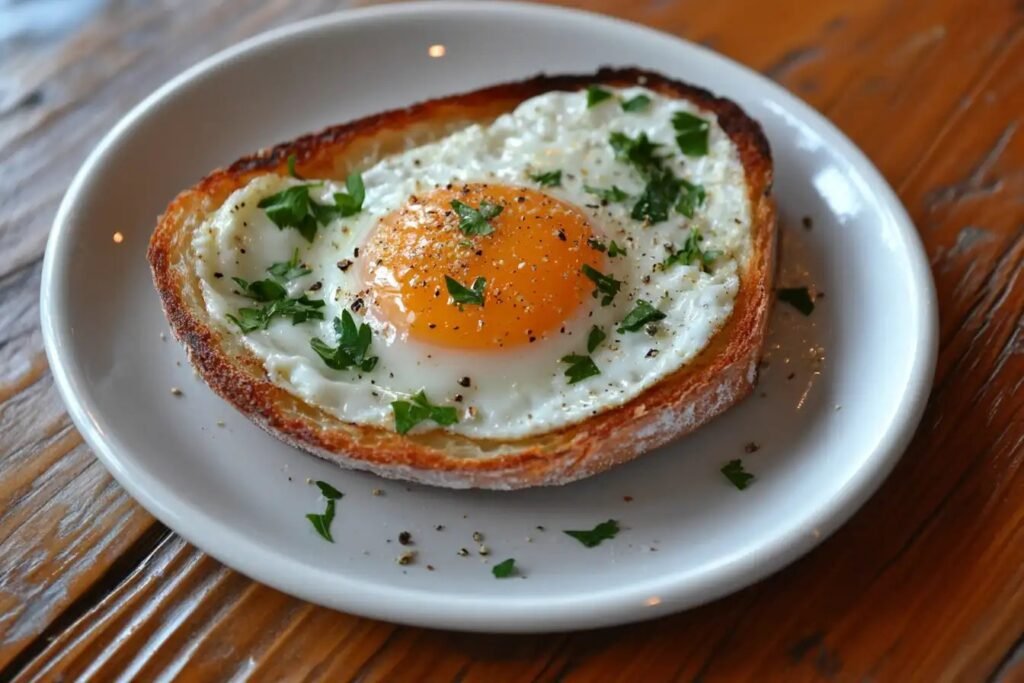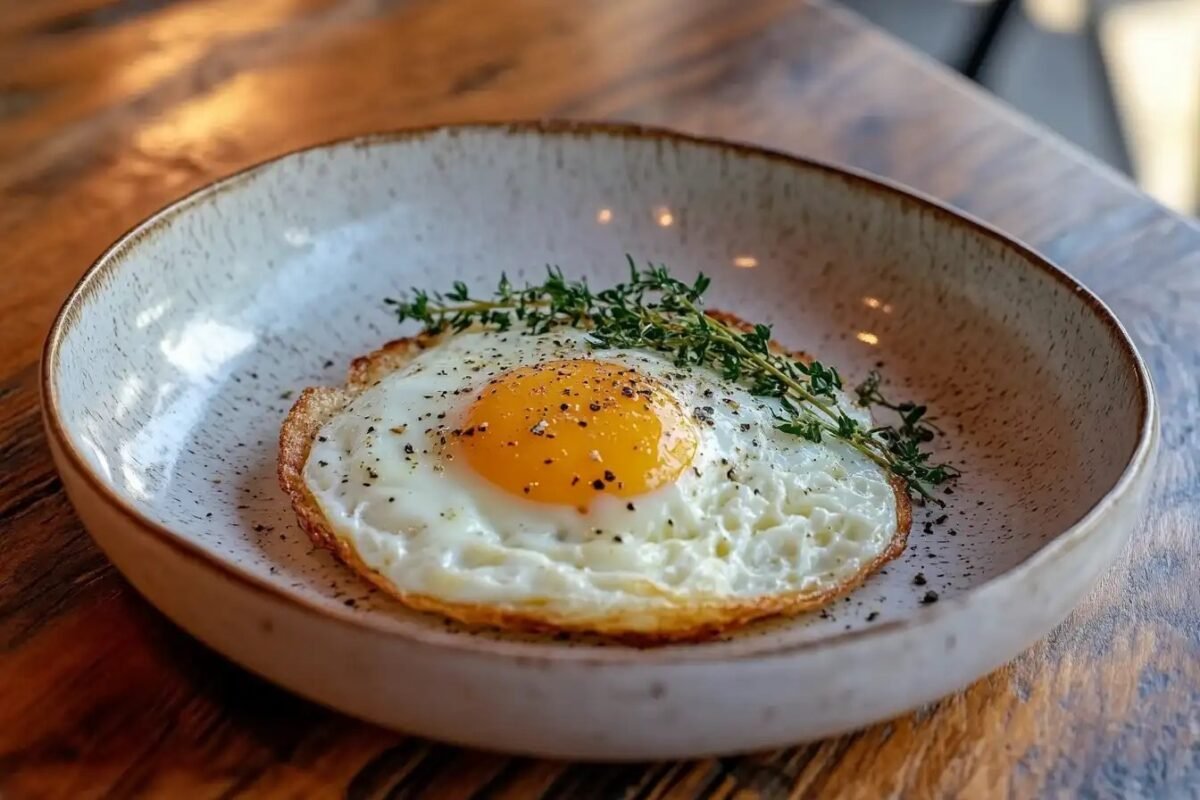Eggs are a breakfast staple worldwide, and knowing how to fry them perfectly can elevate your culinary skills. This guide will teach you how to fry an egg step by step, ensuring consistently delicious results. Whether you’re aiming for a crispy sunny-side-up egg or a perfectly flipped over-easy masterpiece, we’ve got you covered. From the tools and ingredients you need to foolproof techniques, this guide walks you through everything you need to know. Let’s dive in!
Understanding the Basics of Frying an Egg
Why Fried Eggs Are Essential
Fried eggs are quick, simple, and versatile. They can be the centerpiece of your breakfast or a topping for your favorite dishes like burgers, rice bowls, or salads. Learning how to fry an egg step by step is not just about convenience—it’s about mastering a fundamental cooking skill that unlocks countless meal possibilities.
Tools You’ll Need
The key to a perfect fried egg is having the right tools on hand. Here’s what you need:
- Non-stick skillet: Prevents sticking and ensures even cooking.
- Flat spatula: For easy flipping without breaking the yolk.
- Small bowl: Crack your eggs here first to avoid shells in your pan.
- Heat source: A gas stove or an electric one will work just fine.
Ingredients to Prepare
You’ll only need a handful of ingredients to fry an egg, but quality matters:
- Fresh eggs: The fresher, the better. They hold their shape and taste amazing.
- Fat: Butter for richness, oil for crispiness—choose your preference!
- Seasoning: A pinch of salt and pepper is all you need, but feel free to get creative with herbs or spices.
Armed with the basics, you’re ready to start frying! In the next part, we’ll explore the preparation process and take you through each step in detail.
Preparing to Fry an Egg
Setting Up Your Workspace
Before frying an egg, preparation is key. Gather all the tools and ingredients in one place to avoid last-minute scrambling (pun intended). Ensure your pan is clean and dry, as leftover residue can affect the cooking process. Use a small bowl to crack your eggs—it’s an extra step, but it prevents unwanted shells and ensures the yolk stays intact.
Having your fat ready—whether butter, oil, or a combination—at room temperature helps it melt and coat the pan evenly. Place your seasonings, like salt and pepper, within arm’s reach to sprinkle on the egg while it’s cooking.
Choosing the Right Heat Level
Medium heat is your best friend when frying eggs. Too hot, and the edges will burn before the whites are fully cooked. Too low, and the egg may stick to the pan or cook unevenly. Preheat your skillet for about 2 minutes before adding any fat.
Testing the heat? Add a drop of water to the pan—it should sizzle gently, not splatter. Once the pan is ready, add a teaspoon of butter or oil and let it coat the surface evenly. Now you’re ready to fry!
Step-by-Step Guide to Frying an Egg
Cracking and Adding the Egg

- Crack with Care: Gently tap the egg against a flat surface, then open it into your prepared bowl.
- Add to the Pan: Once your fat is melted and slightly bubbling, pour the egg from the bowl into the center of the pan. This helps the whites cook evenly.
Monitoring the Cooking Process
- For Sunny Side Up: Let the egg cook undisturbed until the whites are fully set but the yolk remains runny. This takes about 2–3 minutes.
- For Over Easy: Use a spatula to gently flip the egg after the whites set. Cook for another 10–20 seconds to keep the yolk soft.
- For Over Medium or Hard: After flipping, cook for 30–60 seconds for a partially or fully set yolk.
Finishing Touches
Sprinkle salt and pepper to taste right before serving. For added flavor, try smoked paprika, chili flakes, or a sprinkle of fresh herbs like parsley or chives.
If you’re looking for variations or additional tips, explore Quinto Recipes’ egg fry ideas. Their collection offers creative twists to elevate your how to fry an egg step by step process!
Tips for Perfectly Fried Eggs
Common Mistakes and How to Avoid Them
Mastering how to fry an egg step by step often involves avoiding a few common pitfalls:
- Skipping Preheating: Always preheat your pan. Adding an egg to a cold pan leads to uneven cooking.
- Using Too High Heat: High heat may burn the edges while leaving the whites undercooked. Stick to medium heat for the best results.
- Cracking Eggs Directly Into the Pan: This increases the chance of shell fragments and broken yolks. Instead, crack your eggs into a small bowl first.
A simple adjustment in your process can make a huge difference in the texture and taste of your fried eggs!
Pro Tips for Flawless Results
- Choose Fresh Eggs: Fresher eggs have firmer whites and more vibrant yolks, making them easier to cook evenly.
- Experiment with Fats: Butter gives a rich, creamy flavor, while oils like avocado or olive oil offer a lighter, crispier texture. Try both to find your preference.
- Season at the Right Time: Adding salt before the egg is fully cooked can make the whites watery. Season once the egg is almost done cooking.
For more in-depth egg-related tips, explore Quinto Recipes’ guide to cooking eggs, which includes creative variations and expert advice!
Creative Ways to Serve Fried Eggs
Breakfast Favorites
Pairing fried eggs with classic breakfast staples never goes out of style. Serve them alongside buttered toast, crispy bacon, and hash browns for a comforting meal. Add a handful of sautéed spinach or avocado slices for a nutritious twist.
Looking for something heartier? Try placing a sunny-side-up egg on top of pancakes or waffles—it’s a delightful combination of savory and sweet!
Lunch and Dinner Ideas
Fried eggs aren’t just for breakfast. They’re a versatile addition to many lunch and dinner dishes. Here are a few ideas:
- Rice Bowls: Top a bowl of fried rice or stir-fried vegetables with a fried egg. The runny yolk creates a rich sauce when mixed with the other ingredients.
- Burgers: Add a sunny-side-up or over-easy egg to your burger for extra flavor and texture.
- Salads: Place a fried egg on warm salads like a spinach and bacon mix for a boost of protein and flavor.
International Inspirations
Explore global flavors with these creative egg fry ideas:
- Korean Bibimbap: A fried egg is the crowning glory of this mixed rice dish with vegetables and spicy gochujang sauce.
- Mexican Huevos Rancheros: Serve a fried egg over a tortilla with refried beans, salsa, and avocado.
- Italian Puttanesca: Add a fried egg to a plate of pasta in spicy tomato sauce for a delightful twist.
For more delicious recipes featuring eggs and other creative ideas, check out Quinto Recipes’ inspiring collection of egg-based dishes.
Health Benefits of Fried Eggs
Nutritional Highlights of Fried Eggs
Fried eggs are not only delicious but also a powerhouse of nutrients. They’re packed with high-quality protein, which helps repair and build muscle. A single egg contains about 6 grams of protein, along with essential vitamins like B12, A, and D. These vitamins support energy levels, bone health, and vision.
The yolk, often underrated, is rich in choline, a nutrient crucial for brain function and cell membrane health. Plus, fried eggs cooked in healthier fats like olive oil or avocado oil can provide heart-friendly unsaturated fats.
Making Fried Eggs Healthier
When learning how to fry an egg step by step, it’s easy to make small adjustments for better nutrition. Here are a few tips:
- Use non-stick pans to reduce the amount of oil or butter needed.
- Opt for heart-healthy oils like olive oil for cooking.
- Pair fried eggs with nutrient-rich sides such as leafy greens, whole-grain toast, or fresh fruit for a balanced meal.
With these tweaks, you can enjoy the rich flavors of fried eggs while keeping your meals wholesome and satisfying.
FAQs About Frying Eggs
How to Cook Eggs in a Frying Pan?
To cook eggs in a frying pan, start by preheating the pan over medium heat. Add a teaspoon of butter or oil to coat the surface evenly. Crack the egg into a small bowl and carefully pour it into the center of the pan. Let it cook until the whites are fully set and the yolk reaches your desired consistency. Use a spatula to flip if needed for over-easy or over-medium styles.
How to Fry an Egg in Oil?
Cooking with oil gives fried eggs a crispy edge. Heat about a tablespoon of oil in your pan until it shimmers. Crack the egg into the oil, letting the edges bubble up as it cooks. For an extra crispy texture, spoon hot oil over the yolk. This technique creates a beautifully golden egg with a runny center.
How to Fry an Egg Perfectly?
Perfecting how to fry an egg step by step comes down to practice. Start with fresh eggs, a well-heated pan, and medium heat. Timing is critical: let the whites set fully before flipping or serving. Season at the right time for optimal flavor.
What Are the 7 Ways to Cook Eggs?
While fried eggs are a favorite, there are many ways to enjoy eggs:
- Boiled (soft or hard)
- Poached
- Scrambled
- Baked (shirred eggs)
- Steamed
- Omelets
- Sunny side up or over easy
Each method highlights the egg’s versatility and brings out unique textures and flavors!
Common Mistakes to Avoid When Frying Eggs
Overcrowding the Pan
One of the most common mistakes when learning how to fry an egg step by step is overcrowding the pan. Frying multiple eggs at once in a small pan can lead to uneven cooking and make flipping difficult. If you need to cook several eggs, use a larger pan or fry them in batches for the best results.
Using the Wrong Heat Setting
Many home cooks struggle with finding the right heat level. High heat can burn the edges of your egg before the whites are fully cooked, while low heat may cause sticking or uneven cooking. Medium heat is the sweet spot for perfect fried eggs. Always preheat your pan for consistent results.
Forgetting to Season
Seasoning is a small step that makes a big difference. Forgetting to sprinkle a pinch of salt and pepper can leave your eggs tasting bland. Season your egg just as it’s finishing cooking to bring out its natural flavors without affecting the texture.
Conclusion and Final Thoughts
Recap of the Key Steps
Frying an egg may seem simple, but mastering how to fry an egg step by step is a valuable skill that elevates your cooking game. From choosing fresh ingredients to using the right heat level, each step plays a role in achieving that golden perfection. Whether you prefer sunny side up, over easy, or crispy edges, the techniques in this guide will help you cook eggs like a pro.
Encouragement to Experiment
Once you’ve mastered the basics, don’t stop there! Experiment with different fats, seasonings, and cooking methods to discover your favorite style. Pair fried eggs with creative dishes or explore international recipes like huevos rancheros or Korean bibimbap.
If you’re inspired to try more recipes, explore Quinto Recipes for a treasure trove of ideas to complement your newly honed egg-frying skills. Whether you’re cooking for breakfast, lunch, or dinner, fried eggs are a timeless and versatile addition to any meal.
